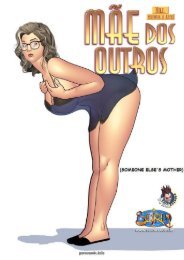AmericanCinematographer201201
You also want an ePaper? Increase the reach of your titles
YUMPU automatically turns print PDFs into web optimized ePapers that Google loves.
Short Takes
I
A shock trooper shatters a girl’s fragile reality at 1,000 fps in String Theory. The short earned cinematographer Steve Romano the
grand prize at the International Cinematographers Guild’s 2011 Emerging Cinematographer Awards.
Through a Glass Brightly
By Iain Stasukevich
Steve Romano’s cinematography jobs have taken him to
many far-flung locales, but for String Theory, the grand-prize winner
at the International Cinematographers Guild’s 2011 Emerging Cinematographer
Awards, he and director Zach Gold never left Gold’s
studio in Brooklyn in their quest to capture the big ideas surrounding
a girl (Evelina Mambetova) who experiences rifts in her reality.
String Theory is the latest in a series of fashion-focused shorts
by Gold, and it uses A.F. Vandervorst’s 2010 collection as its springboard.
According to Romano, Gold and producer/stylist David
Dumas, who also served as art director, wanted a film that was beautiful
and haunting, with serene moments interrupted by jarring
images.
“My job as a director of photography is to act according to
the vision of the directors, including the art director,” Romano
observes. “You’re enhancing what they created, and you have to
make them feel welcome in the process.”
Romano, who also works as a Phantom camera technician,
supplied the production with a Phantom HD Gold camera, Leica
prime lenses (re-housed by Van Diemen Broadcast) and most of the
small lighting package, including a couple of 2x2 Kino Flos, a 10K
Fresnel, a 5K Fresnel and a handful of 2K scoops.
The girl is introduced in a dusty, windowless room lit by
dozens of warm practical lamps. She kneels, motionless, on a
pedestal, covered in what looks like a fine layer of silt; a soft toplight
(a diffused 1K) separates her from the background. In the next shot,
she comes to life and shakes off the silt, which cascades off her skin
in slow motion.
The filmmakers shot Mambetova’s movements at 1,000 fps,
recording to 512 GB CineMags. “We had to match the light for the
rest of the scene, but with something like 5 times more light,” says
Romano. “We made sure the light was coming from the same
angles as in the previous shot, but we concentrated the light on her
instead of the whole set.”
To boost the light level for the slow-motion shot, a Mole 10K
gelled with 1 ⁄2 CTO, Opal and 216 was positioned above the actress.
“There are no super-wide high-speed shots in the film,”
notes Romano, who used tighter compositions to hide the limited
amount of light available at advanced frame rates. “Having a really
good gaffer helps. Christian Ern was our gaffer and lighting director,
Photos and frame grabs courtesy of Steve Romano.
12 January 2012 American Cinematographer













